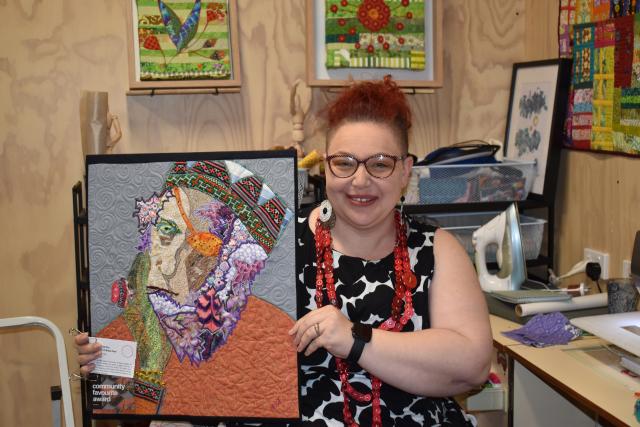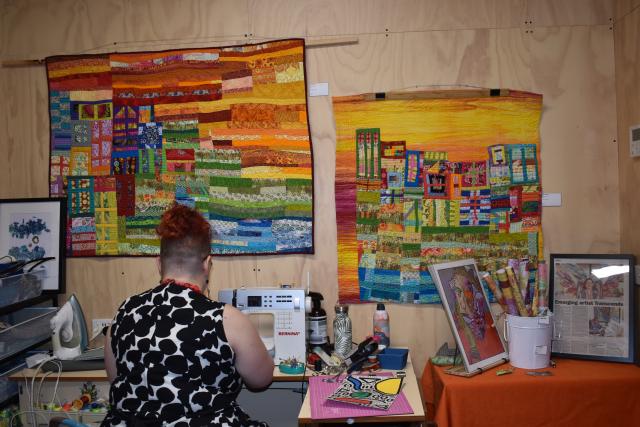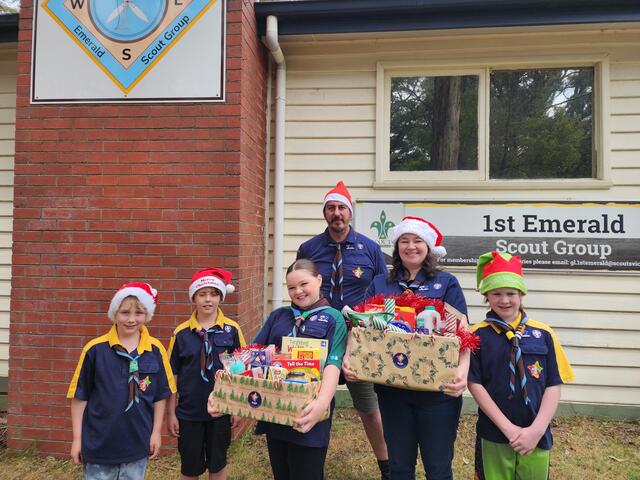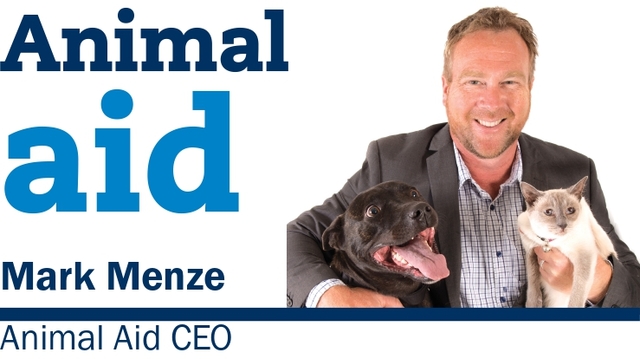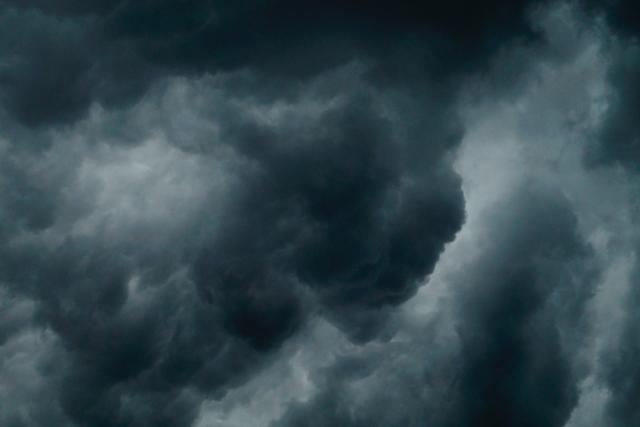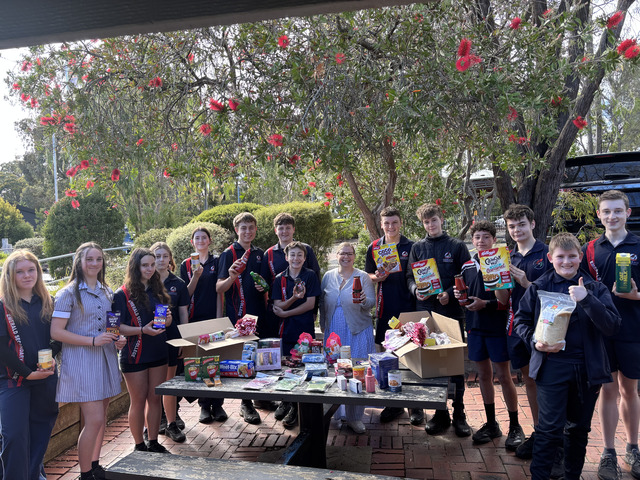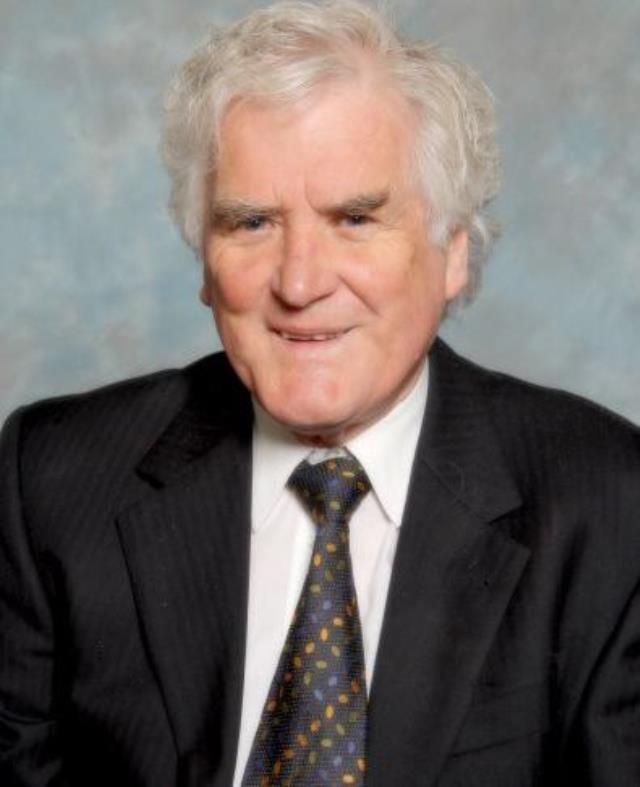Belgrave resident Natasja Van Wyk, a former human rights lawyer from South Africa is now a full time quilting textile artist in the outer east of Melbourne.
For Mrs Van Wyk, quilting was a hobby due to her stressful job, textiles has become a coping mechanism for her panic attacks.
“It’s the way I get through day to day work, my art sparks joy,” she said.
During an annual art competition called, The Upwey Archies where artists submit portraits of local legends, she created a portrait of Belgrave’s local legend, Baba-Desi, using Baba-Desi’s clothes which was given to her by the legend himself.
The portrait won her the Community Favourite Award.
Mrs Van Wyk has been successful with her artwork, she’s had her work displayed in the Red Gallery in Fitzroy, Melbourne Convention Centre and she currently has her work in the Body of Empowerment Exhibition in Yarra Valley.
Mrs Van Wyk took a sabbatical and came to Australia with her husband and their then-five year old son to visit their family in the Dandenong Ranges.
Upon her visit, she told her husband she can see herself living in the hills and only to find out he was offered multiple jobs in Australia – which made the decision more certain.
She started life as a South African and worked there as a lawyer but stopped practicing in 2018, after two traumatic incidents that changed her life forever.
“I got attacked in the city by four males, while getting out of my car to go buy female sanitary products.”
“I had the equivalent of $5 on me, they held a knife to my throat, and they tried biting my wedding ring off my finger” Mrs Van Wyk said.
“I drove home, and that was the day I couldn’t go to court anymore.”
Her trauma intensified to a point where she couldn’t do things on her own.
Mrs Van Wyk finally took the courage to be out of the house again only to witness anther traumatic incident.
“I drove my son to school in the same week and we were in the middle of a taxi shootout, one of his friends got shot in the car in front of us and he died,” she said.
“I didn’t realise my reaction to witnessing a child dying in front of me was so normal.”
“I said to my husband we were so lucky today, we didn’t get killed.”
People often ask her if she left South Africa because it’s a ‘terrible’ place.
“It’s not, in fact t’s a fantastic place but it’s the remains of institutionalised colonialism that is causing the problems in South Africa. And it is very close to my heart,” she said.
Leaving her hometown and her country was never an easy choice but when danger threatened her life, leaving it all behind became her only choice.
“I’ll probably never be able to return, I can’t go back and see my relatives and my friends.”
The hardest part for Mrs Van Wyk was leaving her clients behind – the vulnerable people she dedicated her life helping.
Australia quickly became safe haven for and her family, she felt home until 6 months later when she got her first PTSD attack.
“I was driving my son to school when I saw a bus drove into a tree, it wasn’t even a big thing but I had the most disproportionate reaction you could ever imagine.”
“That day my husband was so glad that I was having this reaction, because my reaction to the shooting in South Africa was never normal,” she said.
She recalls her response where she never cried, got angry or upset.
The incidents still haunts her, but she’s getting the right help from a professional.
The artist became an Australian citizen last year and has never felt more at home.
“It was even more special because the friends I made through my art career were the people that granted me my citizenship certificate,” she said.
The self-taught textile artist said her artwork got her thinking about what she was missing as a kid and what she sees the youths are struggling with today.
“If it starts a conversation, even if it’s the wrong conversation, I feel my arts have been successful,” she said.
The colouful artwork isn’t just a healing method for Mrs Van Wyk but more importantly it’s her way of ‘normalising’ dressing up in all colours and styles, regardless of gender or age.
“I wanted children to be able to come to Burrinja and get dressed in any of the outfits.”
All the outfits made are one-size fits-all and are available in the Burrinja Cultural Centre in Upwey.
“The way I’ve seen the kids interact with this installation has been absolutely amazing,” she said.
When her son was five, he asked her to paint his nails, and he was very specific about the colour of the nail polish.
“He wanted blue because he’s a boy, I told him you can have all the colours of the rainbow and he said no.”
“Because other kids will laugh at him if he doesn’t have blue nails,” she said.
Mrs Van Wyk was stricken to hear her five-year old response.
She said though times have changed but more is needed to bring inclusivness and open mindedness to ensure children feel safe and accepted.
She wants her artwork to empower more men and people of all generations and genders to get into textile art, because at the moment, it’s a predominantly female field.
“Approximately 15% of our textile artists are men and the rest are female. And it is to a certain degree problematic because it’s so being seen as something that a woman should be able to do – that it’s not necessarily art, because it is made it’s made by a female.”
One of her friend from Ticker Art Studio in Belgrave asked her to bring a few of her quilts to an open studio to make the room more colourful and lively.
Mrs Van Wyk takes immense pride in what she creates and what she wears; it boosts her confidence.
“I feel better when I’m wearing really fabulous clothes gives my body armour to go out into the world.”

